Mitomycin C treatment induces resistance and enhanced migration via phosphorylated Akt in aggressive lung cancer cells
- PMID: 27833080
- PMCID: PMC5346766
- DOI: 10.18632/oncotarget.13237
Mitomycin C treatment induces resistance and enhanced migration via phosphorylated Akt in aggressive lung cancer cells
Abstract
Since 1984, mitomycin C (MMC) has been applied in the treatment of non-small-cell lung cancer (NSCLC). MMC-based chemotherapeutic regimens are still under consideration owing to the efficacy and low cost as compared with other second-line regimens in patients with advanced NSCLC. Hence, it is important to investigate whether MMC induces potential negative effects in NSCLC. Here, we found that the malignant lung cancer cells, CL1-2 and CL1-5, were more resistant to MMC than were the parental CL1-0 cells and pre-malignant CL1-1 cells. CL1-2 and CL1-5 cells consistently showed lower sub-G1 fractions post MMC treatment. DNA repair-related proteins were not induced more in CL1-5 than in CL1-0 cells, but the levels of endogenous and MMC-induced phosphorylated Akt (p-Akt) were higher in CL1-5 cells. Administering a p-Akt inhibitor reduced the MMC resistance, demonstrating that p-Akt is important in the MMC resistance of CL1-5 cells. Furthermore, we revealed that cell migration was enhanced by MMC but lowered by a p-Akt inhibitor in CL1-5 cells. This study suggests that in CL1-5 cells, the activity of p-Akt, rather than DNA repair mechanisms, may underlie the resistance to MMC and enhance the cells' migration abilities after MMC treatment.
Keywords: CL1-0; CL1-5; cell migration; mitomycin C; phosphorylated Akt.
Conflict of interest statement
The authors declare no competing financial interests.
Figures
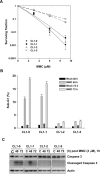
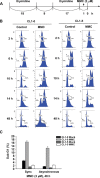
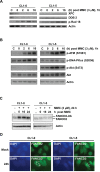
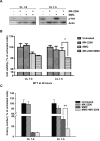
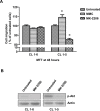
Similar articles
-
Astaxanthin down-regulates Rad51 expression via inactivation of AKT kinase to enhance mitomycin C-induced cytotoxicity in human non-small cell lung cancer cells.Biochem Pharmacol. 2016 Apr 1;105:91-100. doi: 10.1016/j.bcp.2016.02.016. Epub 2016 Feb 24. Biochem Pharmacol. 2016. PMID: 26921637
-
Enhancement of mitomycin C-induced cytotoxicity by curcumin results from down-regulation of MKK1/2-ERK1/2-mediated thymidine phosphorylase expression.Basic Clin Pharmacol Toxicol. 2012 Mar;110(3):298-306. doi: 10.1111/j.1742-7843.2011.00806.x. Epub 2011 Nov 4. Basic Clin Pharmacol Toxicol. 2012. PMID: 21973306
-
Resveratrol Enhances Etoposide-Induced Cytotoxicity through Down-Regulating ERK1/2 and AKT-Mediated X-ray Repair Cross-Complement Group 1 (XRCC1) Protein Expression in Human Non-Small-Cell Lung Cancer Cells.Basic Clin Pharmacol Toxicol. 2015 Dec;117(6):383-91. doi: 10.1111/bcpt.12425. Epub 2015 Jun 30. Basic Clin Pharmacol Toxicol. 2015. PMID: 26046675
-
Preclinical rationale for PI3K/Akt/mTOR pathway inhibitors as therapy for epidermal growth factor receptor inhibitor-resistant non-small-cell lung cancer.Clin Lung Cancer. 2013 Jul;14(4):322-32. doi: 10.1016/j.cllc.2012.12.001. Epub 2013 Jan 16. Clin Lung Cancer. 2013. PMID: 23332287 Review.
-
The role of mitomycin in the treatment of non-small cell lung cancer: a systematic review with meta-analysis of the literature.Br J Cancer. 2001 May 4;84(9):1150-5. doi: 10.1054/bjoc.2001.1742. Br J Cancer. 2001. PMID: 11336463 Free PMC article.
Cited by
-
Comparative efficacy of Chinese herbal injections combined with GP regimen chemotherapy for patients with advanced NSCLC: A protocol for systematic review and network meta-analysis.Medicine (Baltimore). 2020 Jul 10;99(28):e21041. doi: 10.1097/MD.0000000000021041. Medicine (Baltimore). 2020. PMID: 32664114 Free PMC article.
-
Concise Polygenic Models for Cancer-Specific Identification of Drug-Sensitive Tumors from Their Multi-Omics Profiles.Biomolecules. 2020 Jun 26;10(6):963. doi: 10.3390/biom10060963. Biomolecules. 2020. PMID: 32604779 Free PMC article.
-
Perspectives and controversies regarding the use of natural products for the treatment of lung cancer.Cancer Med. 2021 Apr;10(7):2396-2422. doi: 10.1002/cam4.3660. Epub 2021 Mar 2. Cancer Med. 2021. PMID: 33650320 Free PMC article. Review.
-
Combining Mitomycin C with inhibition of BAD phosphorylation enhances apoptotic cell death in advanced cervical cancer.Transl Oncol. 2024 Nov;49:102103. doi: 10.1016/j.tranon.2024.102103. Epub 2024 Aug 24. Transl Oncol. 2024. PMID: 39181117 Free PMC article.
-
Electrochemotherapy with Mitomycin C Potentiates Apoptosis Death by Inhibiting Autophagy in Squamous Carcinoma Cells.Cancers (Basel). 2021 Jul 31;13(15):3867. doi: 10.3390/cancers13153867. Cancers (Basel). 2021. PMID: 34359775 Free PMC article.
References
-
- Siegel R, Ma J, Zou Z, Jemal A. Cancer statistics, 2014. CA Cancer J Clin. 2014;64:9–29. - PubMed
-
- Landis SH, Murray T, Bolden S, Wingo PA. Cancer statistics, 1999. CA Cancer J Clin. 1999;49:8–31. 31. - PubMed
-
- DeSantis CE, Lin CC, Mariotto AB, Siegel RL, Stein KD, Kramer JL, Alteri R, Robbins AS, Jemal A. Cancer treatment and survivorship statistics, 2014. CA Cancer J Clin. 2014;64:252–271. - PubMed
-
- Stathopoulos GP. Five-year survival of nonsmall-cell lung cancer patients after treatment with chemotherapy alone. J Clin Oncol. 1990;8:565–566. - PubMed
-
- Ruckdeschel JC, Day R, Weissman CH, Stolbach LL, Creech RH. Chemotherapy for metastatic non-small cell bronchogenic carcinoma: cyclophosphamide, doxorubicin, and etoposide versus mitomycin and vinblastine (EST 2575, generation IV) Cancer Treat Rep. 1984;68:1325–1329. - PubMed
MeSH terms
Substances
LinkOut - more resources
Full Text Sources
Other Literature Sources
Medical

